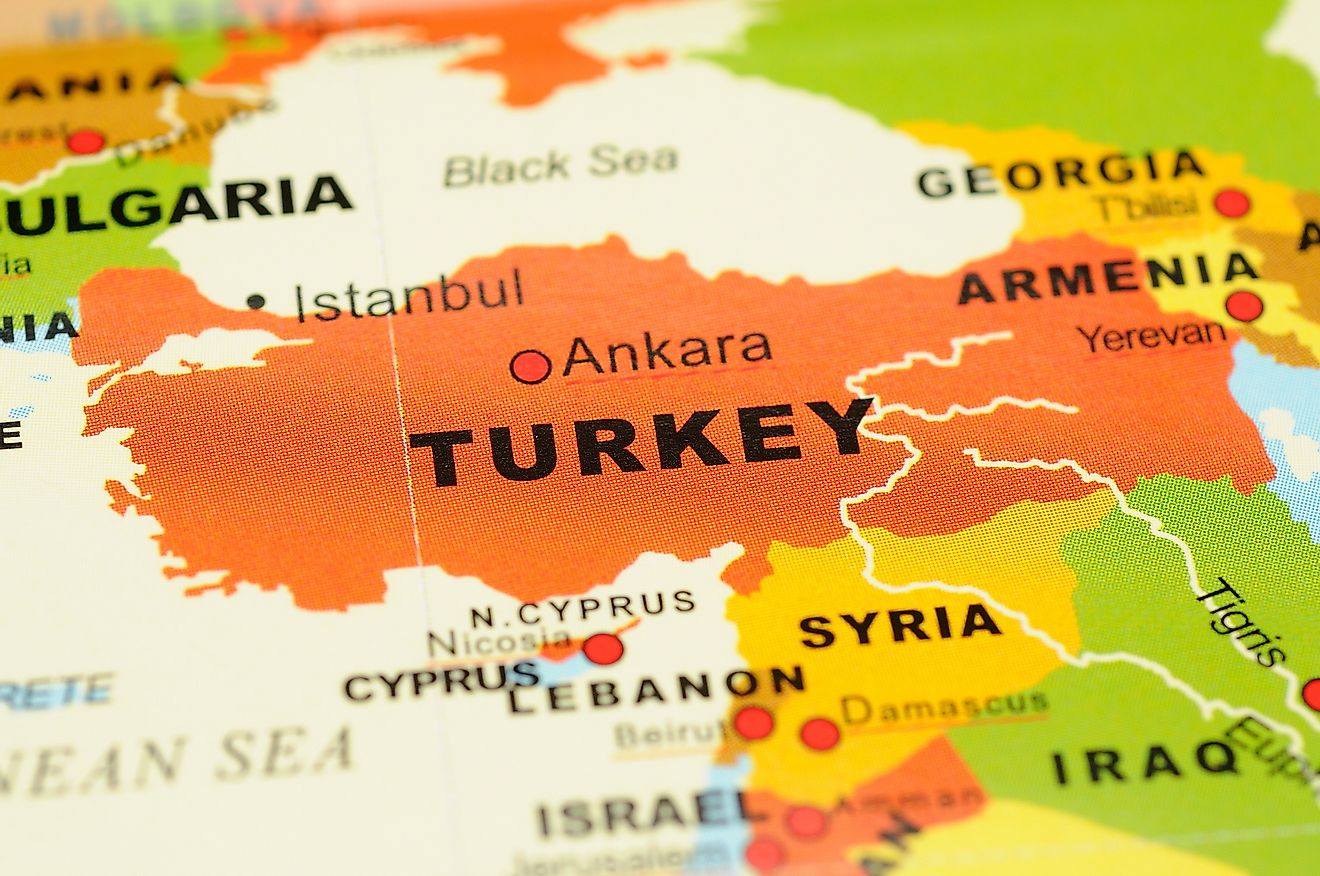Which River Passes Through Most National Capital Cities?
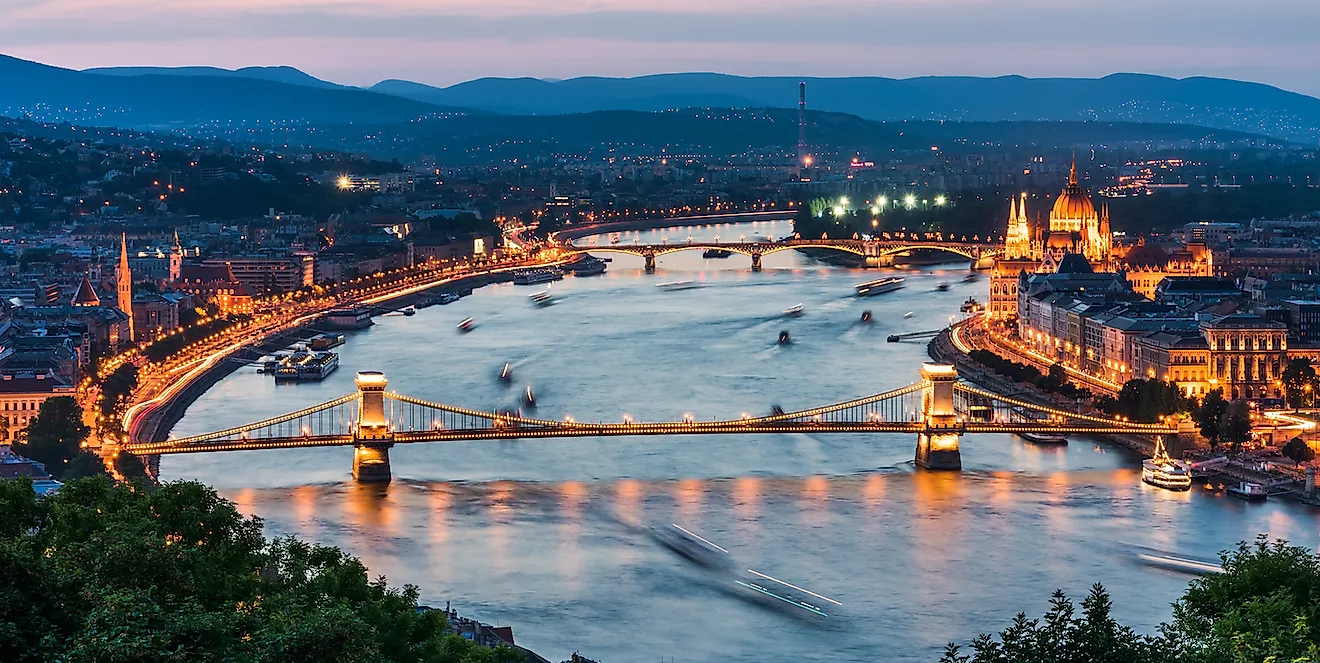
- At 1770 miles, the Danube is the second longest river in Europe. It passes through four capital cities, more than any other river in the world.
- In 335 BCE, Alexander the Great crossed the Danube to conquer the Thracians and Illyrians, marking the way for future empires such as the Romans, Ottomans, and Habsburgs to set borders along the famed river.
- From its source in Germany’s Black Forest, the Danube meanders southeast through scenic landscapes until finally reaching its delta along the Black Sea
Although not the world's longest river, that title belongs to Africa’s Nile at 4,160 miles, followed quickly by the 4,195 miles of the Amazon River in South America, the River Danube flows an impressive 1770 miles through ten European countries, bordering more capital cities than any other river in the world. Winding its way through the continent, the Danube has seen more than its fair share of history. From ancient conquerors like Darius and Alexander the Great, to the rise and fall of empires of the Romans, Ottomans, and Habsburgs, to inspiring countless painters along with composer Johann Strauss’ famous waltz, the Blue Danube, the river continues to be one of the most important waterways in Europe.
From its source in Germany’s Black Forest, the Danube meanders southeast through scenic landscapes of terraced Riesling vineyards, dramatic rock cliffs, until finally reaching its delta along the Black Sea, passing through the countries of Moldova, Ukraine, Serbia, Austria, Slovakia, Croatia, Romania, Hungary, and Bulgaria along the way. Once a major route for transporting troops and supplies, today the cities on the Danube are most commonly travelled by pleasure seekers and river cruises. Along the way the river runs through four capital cities: Vienna, Bratislava, Budapest, and Belgrade.
Danube And The Four Capitals
Vienna
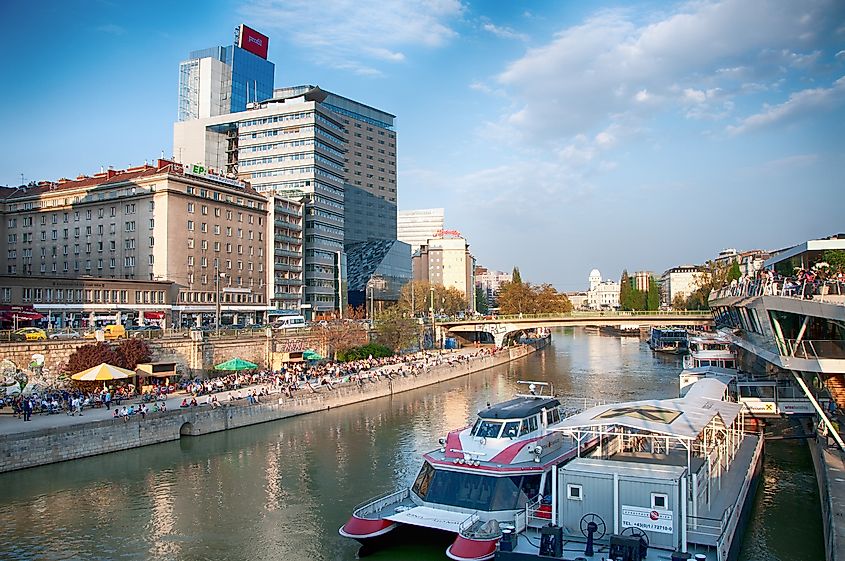
Moving west to east with the flow of the river, Vienna is the first and largest capital city the Danube passes through. Visitors to the city, where the composers Brahms, Haydn, Mahler and Schubert all left their mark as well the artists Klimt and Schiele and political philosophers Trotsky and Stalin, often mistake the man-made canal Donaukanal bordering the old quarter with the Danube. In fact, the river is further out toward the city limits. The area known as Alte Donau, or Old Danube, is located behind the United Nations Headquarters and is a popular garden and promenade area. Further down, the river is divided into two branches flowing on either side of the island Donauinsel. With 26 miles of beaches, pathways, and nature reserves the area welcomes over 1 million visitors a year.
Bratislava
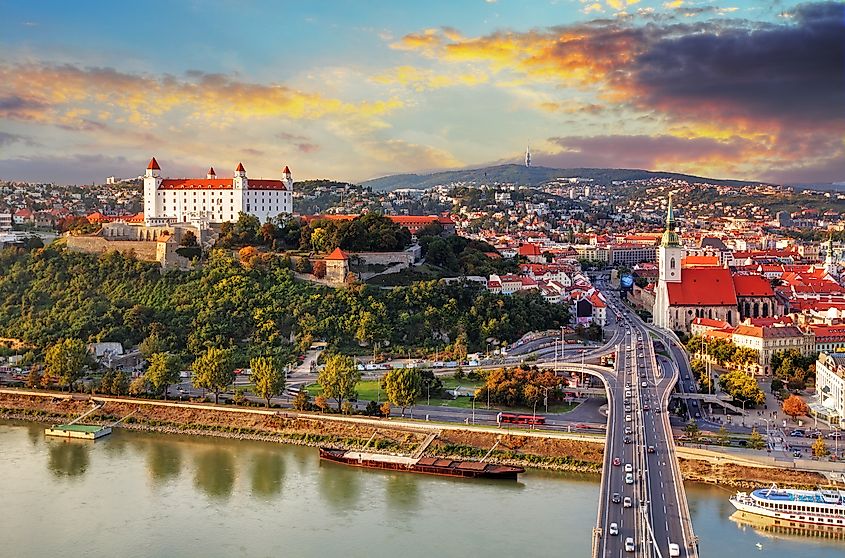
Just a few hours by boat from Vienna, the Slovakian city of Bratislava is famous for its history within the Habsburg empire, and the remarkable ‘upside-down bed’ of Bratislava Castle still caps the stunning skyline. Crossed by several walkable bridges, each offering gorgeous views, before crossing into Hungary at the city of Esztergom and bending sharply to the south.
Budapest
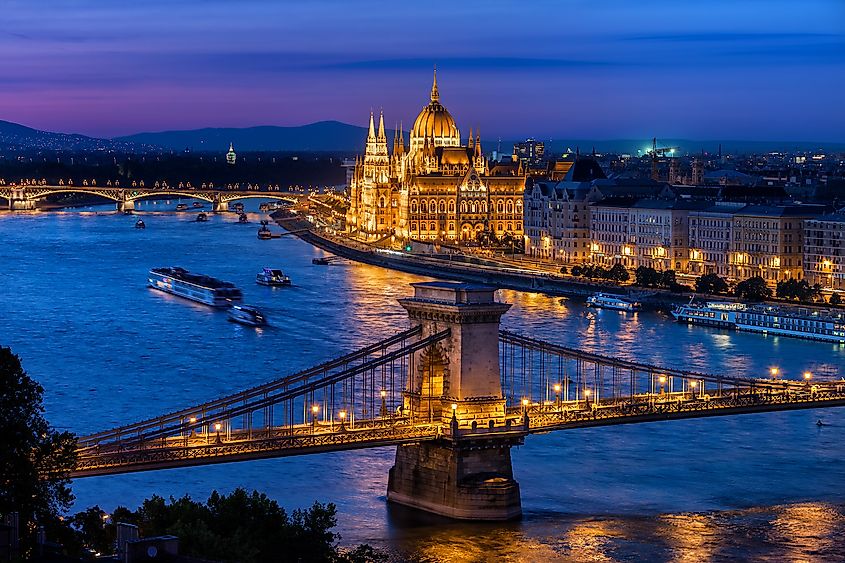
Once two cities on either side of the river bank, with Buda on the hilly west and Pest on the the low-lying East, the capital city of Budapest is a UNESCO World Heritage Site. Architectural highlights include the Royal Palace as well as Matthias Church in the enticingly named ‘castle district’, but it is the romantic and panoramic views of the river at Fisherman’s Bastion that attracts the most visitors at sunset. From the capital, the Danube continues through Hungary, passing flat prairies and the Great Plain, before reaching the Croatia-Serbia border.
Belgrade
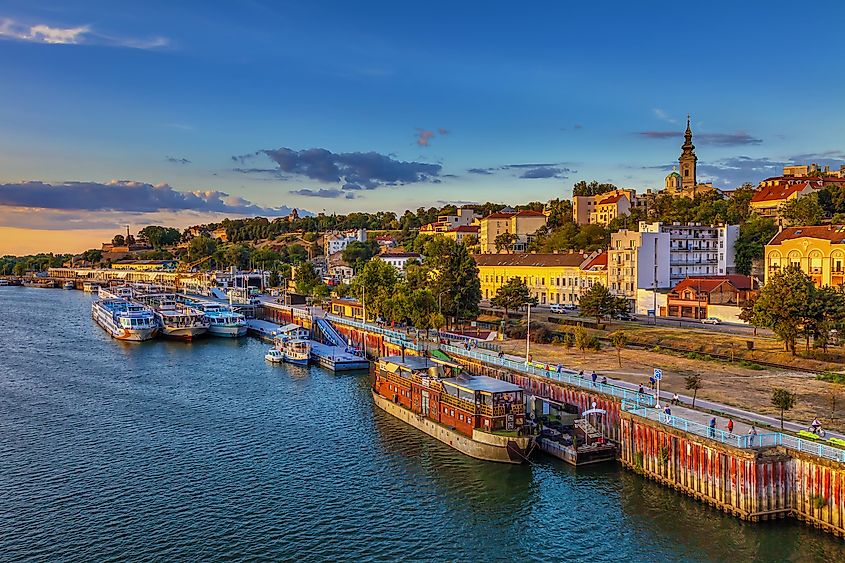
As the Danube twists into the landscape of Serbia it passes the city of Novi Sad and the imposing Petrovaradin Fortress, often referred to as the ‘Gibraltar of the Danube’, dominating the skyline above the three bridges spanning the river. When it reaches the capital of Belgrade, the Danube meets the Sava river, where it once formed the natural border between the Ottoman and Habsburg empires.

